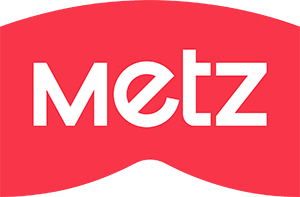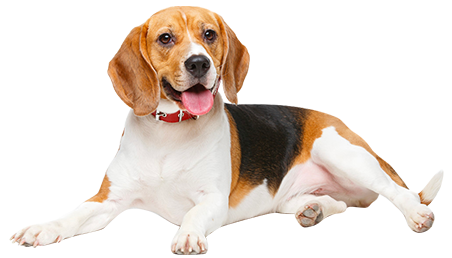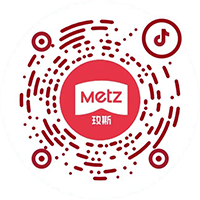Choosing the Right Nutrient Dog Food: A Comprehensive Guide for Pet Owners
Choosing the Right Nutrient Dog Food: A Comprehensive Guide for Pet Owners
As dedicated pet owners, our priority is to ensure our furry friends lead healthy, vibrant lives. One fundamental aspect that plays a crucial role in their well-being is their diet. With the endless array of dog food options available today, it can be overwhelming to choose the right nutrient-rich dog food. This guide will
2025/05/11
Choosing the Right Nutrient Dog Food: A Comprehensive Guide for Pet Owners
As dedicated pet owners, our priority is to ensure our furry friends lead healthy, vibrant lives. One fundamental aspect that plays a crucial role in their well-being is their diet. With the endless array of dog food options available today, it can be overwhelming to choose the right nutrient-rich dog food. This guide will navigate you through the complex world of dog nutrition, helping you make informed choices for your beloved pet.
Understanding Dog Nutritional Needs
Before diving into what specific nutrients your dog needs, it's essential to understand the fundamental aspects of canine nutrition. Dogs, like humans, require a balanced diet to thrive. Their nutritional needs vary based on several factors, including age, size, breed, and activity level.
The Importance of a Balanced Diet
A balanced diet for dogs generally comprises:
- **Proteins:** Essential for growth, muscle development, and overall health.
- **Fats:** Provide energy and support cell function.
- **Carbohydrates:** A source of energy and fiber for digestive health.
- **Vitamins and Minerals:** Vital for various bodily functions.
Each nutrient plays a unique role in your dog’s health, and lacking any of these can lead to health issues.
Age and Nutritional Requirements
Different life stages come with distinct nutritional needs:
- **Puppies:** Require higher protein and fat levels for growth.
- **Adults:** Need a balanced diet to maintain health.
- **Seniors:** Often require fewer calories and more fiber to aid digestion.
Understanding these differences is crucial in choosing the right food for your dog.
Deciphering Dog Food Labels
Navigating through dog food labels can feel like reading a foreign language. However, familiarizing yourself with the terminology will help you make better choices.
Ingredients List
The ingredients list is foundational in determining the quality of dog food. The first few ingredients usually denote the primary components. Look for:
- **Whole meats or meat meals** as the first ingredient.
- **Whole grains or vegetables** as secondary ingredients.
Avoid foods that list fillers or by-products as primary ingredients.
Nutritional Adequacy Statement
This statement indicates whether the food meets the nutritional standards set by the Association of American Feed Control Officials (AAFCO). Choose foods that have this statement, confirming that they provide complete and balanced nutrition.
Types of Dog Food: Dry vs. Wet vs. Raw
The type of dog food you choose can also impact your dog's health. Understanding the pros and cons of each option will help you make an informed decision.
Dry Dog Food (Kibble)
Dry dog food is popular due to its convenience and cost-effectiveness. It promotes dental health by reducing plaque and tartar buildup. However, ensure that the dry food is high-quality and free from unnecessary fillers.
Wet Dog Food (Canned)
Wet dog food is often more palatable for dogs, containing higher moisture content, which is beneficial for hydration. However, it can be pricier and may require careful storage once opened.
Raw Dog Food
Some pet owners opt for raw diets, believing they mirror what wild dogs eat. While raw diets can be nutritious, they require careful preparation to avoid health risks. Consult with a veterinarian before making this switch.
Recognizing Quality Ingredients
Not all dog foods are created equal. Recognizing high-quality ingredients versus low-quality ones is crucial for your dog’s health.
High-Quality Proteins
Look for identifiable sources of protein such as chicken, beef, or fish. Protein meals (like chicken meal) are also acceptable as they contain concentrated protein.
Healthy Fats
Fats are essential for energy and coat health. Look for foods that include sources like chicken fat or fish oil, which also provide omega-3 and omega-6 fatty acids.
Whole Grains and Vegetables
Opt for whole grains like brown rice or oats, which offer digestible carbohydrates. Vegetables like sweet potatoes and peas provide essential vitamins and minerals.
Common Dog Food Myths Debunked
There are countless myths surrounding dog nutrition that can lead to poor dietary choices.
Myth: Grain-Free is Always Better
While some dogs have grain allergies, most do not. Grain-free diets can lead to nutritional deficiencies if not formulated properly.
Myth: All "Natural" Foods are Healthy
The term "natural" isn’t regulated, meaning it doesn’t always equate to high-quality ingredients. Always check the ingredient list rather than relying solely on marketing claims.
Special Dietary Needs for Dogs
Certain health conditions may require specific dietary considerations.
Allergies and Sensitivities
If your dog shows signs of allergies, such as itching or digestive upset, consult a veterinarian. They may recommend a limited ingredient diet or hypoallergenic dog food.
Weight Management
If your dog is overweight, choosing a weight management formula can help reduce calorie intake while fulfilling their nutritional needs.
Breed-Specific Requirements
Some breeds have unique health traits that may require adjusted nutritional approaches. Consult with your vet for breed-specific recommendations.
Tips for Transitioning Dog Food
Switching dog foods can cause digestive upset if not done gradually. Follow these steps to ensure a smooth transition.
Step-by-Step Transition
1. **Start Slow:** Mix 25% of the new food with 75% of the old food for a few days.
2. **Increase Gradually:** Gradually increase the new food ratio every few days until you reach 100%.
3. **Monitor Your Dog:** Watch for any signs of digestive upset during the transition.
When to Consult a Veterinarian
If you notice any adverse reactions or if your dog is picky, consult your veterinarian for personalized advice and recommendations.
FAQs About Choosing Nutrient Dog Food
1. What should I look for in dog food?
Look for a high-quality protein source as the first ingredient, nutritious fats, and whole grains or vegetables without fillers.
2. How much dog food should I feed my dog?
Feeding amounts depend on your dog’s age, size, and activity level. Always refer to the feeding guidelines on the dog food packaging.
3. Is it safe to feed my dog human food?
Some human foods are safe, while others can be toxic to dogs. Always research and consult with your veterinarian before sharing food.
4. How often should I change my dog’s food?
You should only change your dog’s food if necessary, such as for health reasons or if your dog is not responding well to the current diet.
5. Can dogs be vegetarians or vegans?
Dogs are omnivores, but vegetarian or vegan diets require careful planning to ensure all nutritional needs are met. Consult with a veterinarian for guidance.
Conclusion
Choosing the right nutrient-rich dog food is vital for your pet’s health and happiness. By understanding your dog's nutritional needs, reading labels carefully, and recognizing quality ingredients, you can make informed decisions. Remember, transitioning to a new diet should be done gradually, and it’s always wise to consult with your veterinarian regarding any specific dietary concerns. With the right food, you can help your furry friend lead a long, healthy life filled with joy and vitality.
Key words:
Contact Us
Address:
No. 22, Jingxing Road, Economic and Technological Development Zone, Nantong, Jiangsu Province.
E-mail:
panghuiqiang@metzpet.com
Contact Phone:
+86-18862996617














